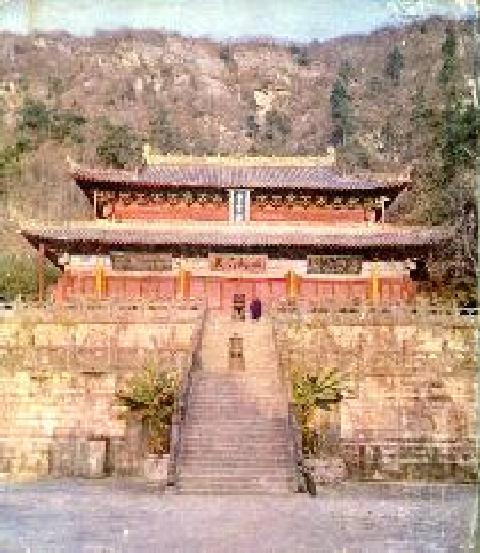TAOISM AND SHAOLIN KUNGFU

Question
But what about Taoist temples? Although I am not a Taoist, nor have I studied Taoist systems, but from what I do know, Taoist temples are older than Shaolin itself, and Taoist styles already existed when the first Shaolin temple was created!
-- Michael, USA
Answer
Taoism existed long before the Shaolin Monastery was built in 495 CBE. Shaolin Kungfu developed only after the great Bodhidharma taught in the Shaolin Monastery from 527 BCE. The early Taoists masters did not cultivate in temples but wandered about and sometimes taught in schools like Socrates and Plato did.
Organized Taoism, with large number of followers gathering around Taoist temples, florished in the 2nd century CBE. The two earliest schools were Tai Ping Tao and Tian Shi Tao, which means the Eternal Peace School of Taoism and the Heavenly Master School of Taoism. Their followere were trained in martial arts, not for sport but for the serious business of defence, for they formed their own armies claiming autonomy from the then Han government.
Even Taoist masters who were not keen in politics and dedicated themselves to spiritual cultivation were martial art experts. For example, Ke Hong, the famous Taoist master of the Han Dynasty, was well known for both armed and unarmed combat, and Lu Dong Ping, who became a Taoist saint, was a master swordsman.
But Taoist martial arts at this time were not institionalized, i.e. they were not taught as distinctive schools of martial arts. The first time martial art anywhere in the world was institiutionalized was at the Shaolin Monastery. In other words, before Shaolin Kungfu, there were no martial arts anywhere in the world being taught with a distinctive name, such as Praying Mantis Kungfu, Chen Style Taijiquan, Shotkan Karate or Budokan Judo; martial arts were being taught as martial arts with no specific names.
The first time Taoist martial arts were institutionalized was at the Wudang (pronounced as “wu-t'ang”) Mountains, by Zhang San Feng, who is accordingly regarded as the First Patriarch of Taoist martial arts, and who lived in the 15th century CBE, about 1000 years after Bodhidharma, the First Patriarch of Shaolin Kungfu.
Question
You mentioned some Shaolin heroes. What about the great General Huang Ti, who is thought to have created WuSu?
Answer
“Huang Ti” means emperor. I reckon you mean Shi Hwang Ti, the great, first emperor who united China for the first time and established the Qin Dynasty in the 3rd century BCE. Shi Hwang Ti introduced the sports of shoupo and juedi, which were probably the earlest boxing and wrestling matches in the world. Shi Hwang Ti was neither a Taoist nor a Buddhist, and practised neither Shaolin Kungfu nor Wudang Kungfu, which were both non-existent at that time.
By “WuSu” I reckon you mean “wushu”, which is the current official Chinese term for martial arts. Throughout their long history, the Chinese have used more than 40 terms to refer to martial arts. The term “kungfu” is actually colloquial, and is used mainly by Westerners.
Wushu already existed before Shi Hwang Ti. Nobody invented wushu; it is a generic term for any arts of fighting. The Chinese government today, for some good reasons, promotes wushu as a sport. Hence, many people in the West, not knowing the intricacies of Chinese terms, often associate wushu as a demonstrative rather than a combative art.
Question
What is the difference between Taoist and Buddhist philosophy?
Answer
It is like asking what is the difference between Christian and Muslim philosophy. Depending on numerous variables, there are many ways to answer your questions, and each way is “correct” in its own right.
One may, for example, say that there is no difference between Taoist and Buddhist philosophy because both explain ultimate reality (and Taoist and Buddhist practices show the way to ultimate reality). Another may say that Taoist and Buddhist philosophy are totally different: one talks about yin-yang and bagua, the other about noble truths and karma.
Nevertheless, in a nutshell, your question may be answered as follows. Taoist philosphy explains how a follower may become a saint in heaven, or at the highest level be united with the cosmos. In seeking the Tao or spiriutal fulfilment, he should realize that reality is manifested in two complimentary yet opposing dimensions, and that the cosmos can be symbolized by eight archetypical categories of characteristics.
On the other hand, Buddhist philosophy explains that the phenomenal world we see is actually a creation of mind, and that ultiamte reality is devoid of appearances. How reality appears to us is influenced by various conditions, and the ultimate aim is to break down these conditions and actualize cosmic reality.
LINKS
